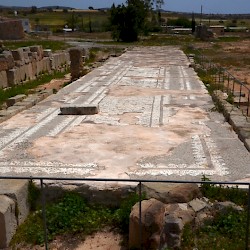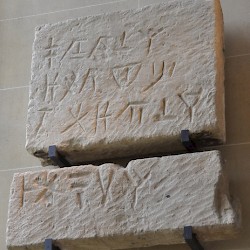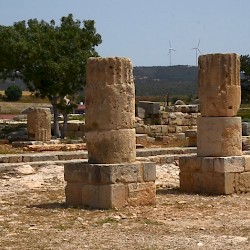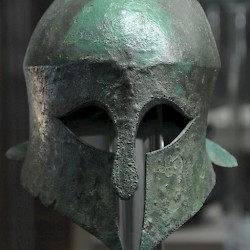Old Paphos
Q22988494Paphos (Greek Πάφος): name of two cities in the southwest of Cyprus, the Archaic and Classical town (also known as Kouklia) and the Hellenistic and Roman city (which is still called Paphos).

According to Greek myth, the ancient city of Paphos was founded by one Paphos, the son of Pygmalion. The story tells that the latter had fallen in love with a statue he had made out of ivory and which had been brought to life by Aphrodite, the goddess of love. Paphos was the son of Pygmalion and the statue.
Another myth tells how Aphrodite came to land near Paphos. Settlers from Mycenaean Greece dedicated a sanctuary to the goddess, with an altar in the open air. Probably, the cult of Aphrodite was much older and can be a continuation of a fertility cult that goes back to the Bronze Age. The goddess was worshipped as a cone-shaped stone, a baetyl, which stood near the altar. Paphos may have been an oracle as well.
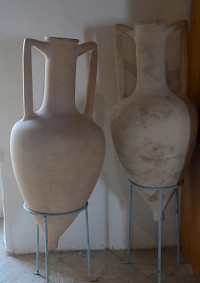
The kings of Paphos served as high priests of the sanctuary. One of them, Eteander, is mentioned in an inscription by the Assyrian king Esarhaddon (r.680-669).note Another king is known to have supported the Persian king Xerxes with twelve ships in the expedition against the Greeks (in 480 BCE).
A king named Nikokles refounded Paphos in 321 BCE: New Paphos, which was an important city in the Hellenistic age. After Alexander’s conquests, Cyprus became part of the Ptolemaic Empire. The old city-states were brought under control of a governor, but the local king of Paphos retained his honorable function as high priest of the temple. After the Roman conquest, the sanctuary would have the special attention of the Roman emperors.
With the advent of Christianity, Aphrodite’s cult disappeared and in the Byzantine age, the sanctuary fell into disrepair.
Marchellos
Archaeologists have been excavating on several places in the neighborhood of modern Kouklia. An interesting site is Marchellos, where the remains have been found of an ancient siege. It is almost certainly the capture of Paphos by the Persians during the Ionian Revolt (499-494 BCE).




